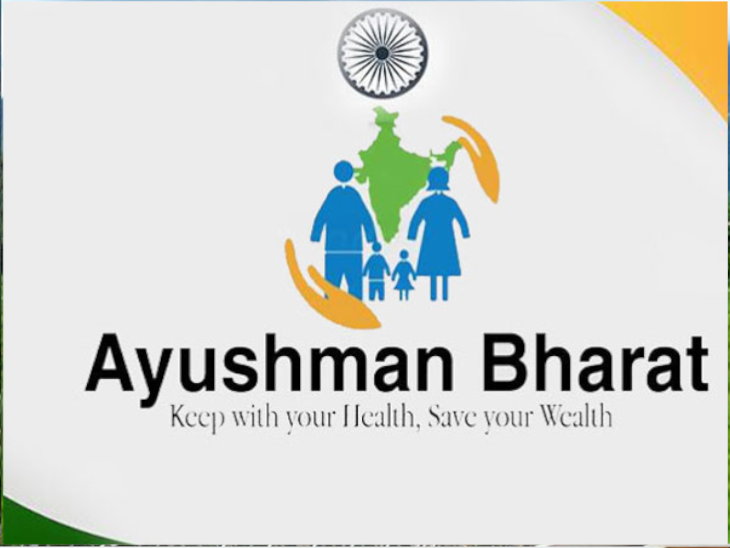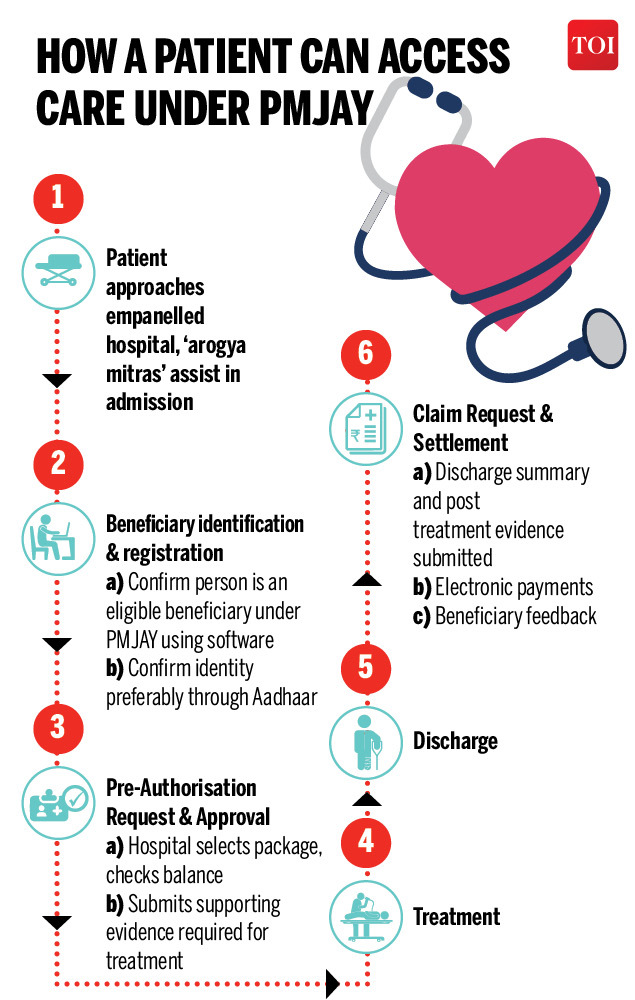Indian government launches world’s largest publicly funded healthcare scheme
 The Indian government has launched the world’s largest publicly funded health insurance scheme, ‘Ayushman Bharat’- Pradhan Mantri Jan Arogya Yojana -also dubbed as ‘Modicare’ on Sunday, 23rd September. The scheme is set to cover some 500 million poor people around the country. It promises a health cover worth 5 lakh rupees per family per year through a network of Empanelled Health Care Providers (EHCP). The EHCP network will provide cashless and paperless access to services for the beneficiaries at both public and private hospitals.
The Indian government has launched the world’s largest publicly funded health insurance scheme, ‘Ayushman Bharat’- Pradhan Mantri Jan Arogya Yojana -also dubbed as ‘Modicare’ on Sunday, 23rd September. The scheme is set to cover some 500 million poor people around the country. It promises a health cover worth 5 lakh rupees per family per year through a network of Empanelled Health Care Providers (EHCP). The EHCP network will provide cashless and paperless access to services for the beneficiaries at both public and private hospitals.
What is Ayushman Bharat?
The Ayushman Bharat is a scheme that aims to provide health assurance to 10 crore families or around 50 crores families or around 50 crore Indians, who will be given up to Rs 5 lakh cover per year.
The programme was first announced as a part of the yearly budget in February. The expected cost to the central and 29 state governments for this is $1.6bn a year in total. The main objectives of this scheme include reducing out of pocket hospitalisation expenses, fulfilling unmet needs and improving access of identified families to quality inpatient care and day care surgeries. The scheme would cover 1300 illnesses, including cancer and heart diseases. It would also cover pre-existing illnesses.
Expenditures will be shared by the central and state governments at a 60 to 40 ratio in most states and funding will be increased gradually according to the demand.
The Scheme was officially launched by the prime minister Narendra Modi at Ranchi, Jharkhand. On that occasion, prime minister Narendra Modi has claimed that a government scheme at “such a grand scale is not being carried out anywhere in the world”. He also added that this scheme would transform India into a medical hub in future. He said that the number of beneficiaries of this scheme is somewhat equal to the population of the European Union.
Ayushman Bharat has two components, the creation of 150,000 health and wellness centres which will provide Comprehensive Primary Health Care (CPHC) and the PM JAY which provides health protection cover to poor and vulnerable families for secondary and tertiary care. The first Health and Wellness Centre was launched by Modi at Jangla, Chhatisgarh on April 14. States have the option to use an existing trust/society or set up a new trust/society to implement the scheme as State Health Agency and will be free to choose the modalities for implementation. “The scheme will not have any distinguished plans on the basis of sect or caste. There will be no discrimination based on any race or any fraternity,” said Modi.
Who are the beneficiaries?

The eligibility is on the basis of deprivation criteria as per the latest Socio-Economic Caste Census (SECC) data. In the rural areas, the beneficiaries are identified based on the deprivation categories, D1, D2, D3, D4, D5, and D7), while in the urban areas, the occupational criteria determine the beneficiary. Apart from that, the Rashtriya Swasthya Bima Yojna (RSBY) beneficiaries in states in which they are active are also included. Aadhar card is not mandatory for availing the scheme. People can use Voters id or ration card. The family members of PM JAY beneficiaries need not pay any expenses for hospitalization if they seek treatment from a government or other empanelled hospitals. Also, every beneficiary would QR code which will be scanned to verify his eligibility to avail for the scheme.
Disagreements
Though the experts are praising the programme, they say it should have included primary day-to-day healthcare instead of just secondary and tertiary care for more serious and long-term treatment. “Modicare does not extend to primary health care, which, we believe, is the weakest link in the provision of public health in India,” Rajiv Lall and Vivek Dehejia of the IDFC Institute think-tank said in a media article. “The crucial point is that poorly delivered primary care inevitably increases the burden on health and finance at the secondary and tertiary levels down the line,” they add.
Though as many as 30 states and Union territories have signed MoU’s to implement the programme, five states, Telangana, Odisha, Delhi, Kerala and Punjab have not signed. They said that they will not implement the program unless their concerns are addressed. They also claimed that they have better health assurance schemes. Also, the private hospitals are in disagreement on the package rates, training of the healthcare staff is inadequate and the standard treatment protocols that are supposed to be the cornerstone of the scheme are yet to be seen.
Source: 1. https://health.economictimes.indiatimes.com/news/policy/india-launches-worlds-largest-state-run-healthcare-programme/65921310
2. https://www.aljazeera.com/news/2018/09/india-modi-launches-world-largest-health-insurance-scheme-180923095218001.html
3. https://medicaldialogues.in/pm-modi-launches-ayushman-bharat-lays-foundation-stone-of-2-medical-colleges/
4. https://www.deccanherald.com/national/modi-rolls-out-worlds-largest-694150.html
5. https://timesofindia.indiatimes.com/india/ayushman-bharat-health-scheme-all-you-need-to-know/articleshow/65919352.cms